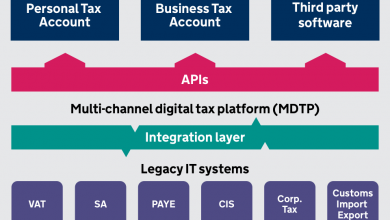Decision Criteria for Selecting Microsoft Power Apps – Pepsi Case Study
An existing Microsoft footprint and shortage of developer resources are ideal factors for going with Power Apps.
 A number of important factors will shape which Low Code platform is the best fit for an organization.
A number of important factors will shape which Low Code platform is the best fit for an organization.
A key decision criteria relevant to the value of the Microsoft approach is their end-to-end integrated suite: you can improve programming methods at the front end with Low Code, and link this to a life-cycle process that deploys it across Azure Cloud services too.
This effect is greatly magnified if the organization is already a big Microsoft adopter, Pepsi is a great case study example, as the value of their Office tool sets is the same horizontal integration, the Low Code movement simply evolves that same metaphor and further incorporates the Cloud era as well.
As the Pepsi case study explains, for the Microsoft Power Platform there’s two key characteristics that are especially important:
- An existing Microsoft footprint.
- A small IT team with no developers.
It doesn’t mean the tools aren’t relevant to other organizations, those with very large developer teams or a mixed IT estate, but it does emphasize the key points:
Existing Microsoft footprint
Many organizations long ago made a commitment to Microsoft as their primary business IT supplier, wholly adopting the operating systems, devices, office apps and then Cloud services too. Power Apps is a natural evolution of this relationship and of course the different tools will all work in an integrated manner.
No developers
This ‘no brainer’ is further compounded for scenarios like Pepsi who had a mainly operational IT team, ie. they fixed all the equipment and supported users, devices etc., and even configured and connected Cloud apps, but they did no actual code development of any kind.
They saw the opportunity for technology improvements that would require that type of skill, so they turned to Low Code as the quickest and easiest way to bridge that skill gap.
Low Code will also find a role within teams that have many highly skilled developers, but a demonstration of it’s most obvious and effective benefits is meeting a previously unmet skills need.
Digital Innovation and Process Automation
The G&J Pepsi IT team used Power Apps to create Store Audit, an app that enables better mobility and flexibility for field personnel. Previously, they’d record key information from a store audit on a piece of paper, then place it in a tray with little accountability and often no resolution. Now those in the field can inspect stores, collect data, provide an aggregated view to leadership, and better ensure customer satisfaction.
Similarly, they created a merchandiser app for better store tracking. If, for example, delivery personnel see displays that need to be fixed, they now know that submitting this information will trigger alerts to the supervisor and upwards.
Previously, their only course of action was to email the salesperson, with no assurance the salesperson would be available to respond. “That email could just go in a black hole,” summarizes McKinney.



